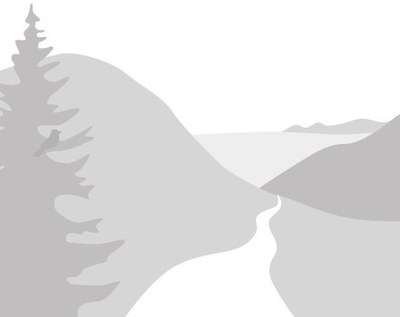
Trip Report
Glacier Climb - Little Tahoma/East Shoulder
A bluebird weekend on Little Tahoma with a strong group of 2017 Intense Basic Students.
- Sat, Jul 1, 2017 — Sun, Jul 2, 2017
- Basic Glacier Climb - Little Tahoma/East Shoulder
- Little Tahoma/East Shoulder
- Climbing
- Successful
- Road suitable for all vehicles
-
The route is in excellent shape. There was certainly the crumbly loose rock that we had been warned about on the route, but most of it is still under snow and what we encountered was manageable by either staying very close together or exiting gullies one at a time (depending on where it was).
The biggest challenge encountered was on the descent, from approximately 10,600' to 9,200'. The snow on the Whitman Glacier had warmed up, and sections are probably 40-45 degrees. This was a few of the students' first ever experience on glaciers and the slippery snow led to some slips and, more importantly, fear. We switched from plunge stepping to side stepping down, which was significantly slower but got everyone down safely.
I requested backcountry permits for 9 for Fryingpan Glacier in early May and received them within two hours of my request. The new MRNP reservation system seems to be working well!
Loaded with our permits and blue bags, we departed the trailhead at around 9:30 AM. We made it a point to go at a moderate pace and stop once an hour, which made for a very pleasant day. We reached 7000', just below Meany Crest, at 1:20 PM, and saw some great bivy sites along the ridgeline and assumed that it was the camp area that was noted on the Mountaineers website. We took our time boiling water and setting up tents, walked up to Meany Crest for some photos, and settled in for our summit attempt. It was very hot; nobody put flies on their tents and those of us with bivys laid on top of them until the sun set and it got a little cooler. We later realized that the larger bivy sites that are noted on the Mountaineers page are actually around 7,500', on top of Meany Crest. But our spot was pretty as well.
We woke up at midnight and started our ascent at around 1:30 AM, knowing that the next day would be warm as well wanting to get as much time on harder safer snow as possible. Routefinding up the Fryingpan and Whitman Glaciers was very straightforward. We kept our crampons on once we hit the first rock gully, knowing that there was one more icy snowfield above it. However, we left all but one rope at the top of the Whitman (who wants to carry the extra weight if they don't have to?)
The upper snow gully was icy but straightforward, and once we were off of it we got to take off our crampons, to the students joy and delight (they aren't sold on mixed climbing yet). The last rock section was manageable. We didn't find the class 2 ramp on the way up and ended up finding a fun more direct route that had a class 4 move or two. There is some exposure to get to the true summit, and one spicy move, but all of the party members handled it like experts. There was certainly loose rock that the route has a reputation for, but I think that the high snow year and relatively early time in the season made it manageable. It certainly isn't the worst basic climb for loose rock!
Taking breaks once an hour and moving at a moderate pace, we all reached the true summit at around 7:30-7:45 AM. Given the bluebird day, we took our time at the summit and descended one by one at around 8:30 AM. We were the only people on the route so for any of the looser rock sections we made it a point to go down one by one and keep all other party members out of the way of any potential rockfall. There were no real close calls, in my opinion.
The biggest challenge of the climb came as we attempted to descend the steepest upper portions of the Whitman Glacier, which had softened up quite a bit. It was perfect for plunge stepping, but with this being most of our students' first time on a glacier, the steepness and slippery nature of the plunge stepping was not secure enough at all. After a couple of slips, we took it slower and side stepped our way down 2000' of glacier. There are some wide crevasses opening up, making a long fall dangerous. However, the snow was soft enough that anyone who knows how to self arrest would have been just fine. The 2000' of descent took us over 3 hours, slower than our ascent pace!
Once we got to the bottom of the Whitman Glacier, we took off our crampons and discussed whether we would summit Whitman Crest as we had originally planned, being significantly later and slower than expected on the descent. In the end two of the faster party members (one student, one rope lead), ascended to Whitman, while the rest of us descended to camp. There are currently no open crevasses on the Fryingpan, but we remained roped up anyway given the soft snow conditions and possibility that something might have changed during the hours that we were away.
The Fryingpan was significantly faster to navigate and we made it back to camp at around 1 pm. We took our time packing, and the two Whitman summiters arrived without delaying the group. A fantastic glissade from camp led us almost back to the trail. We got to our cars just before 4 PM, making for a 14.5 hour summit day.
It's interesting that this climb is rated T3/S3. I would say that it would be more challenging for most students than the basic routes on Rainier.
 Sherrie Trecker
Sherrie Trecker